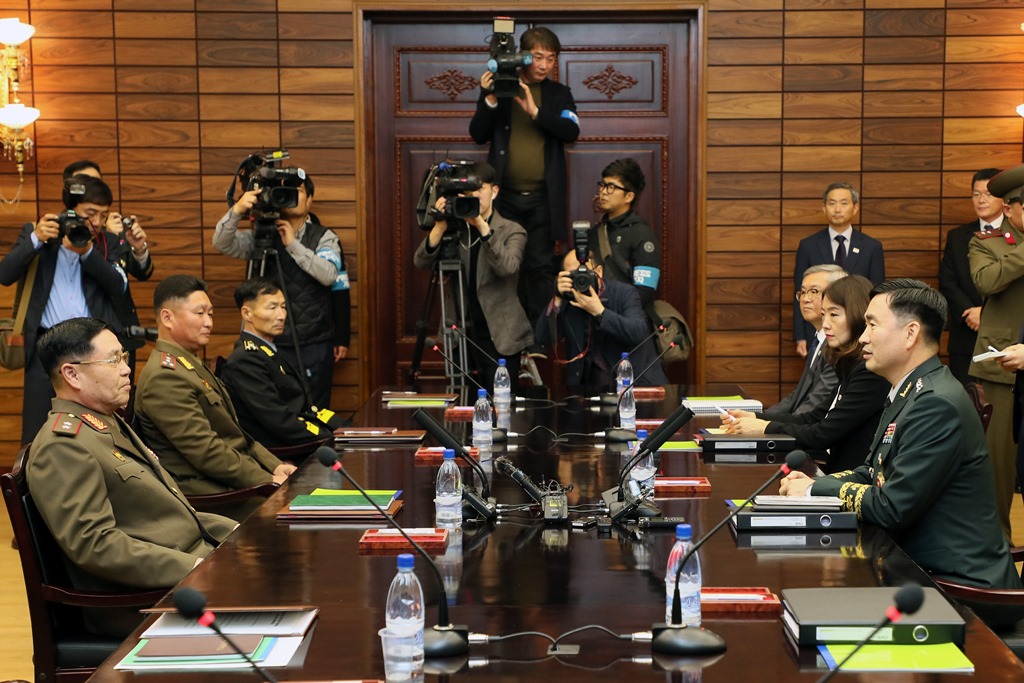Kim-Trump Summit: Success for North Korea

What were the circumstances of the summit?
The summit was the result of several months of diplomatic activities between North Korea and the U.S. In March, U.S. President Donald Trump agreed to Kim’s proposal for a summit, delivered by a South Korean delegation. Subsequently, U.S. and North Korean delegations met several times. U.S. Secretary of State Mike Pompeo paid a double visit to Pyongyang and the U.S. was visited by vice-chairman of the Workers’ Party of Korea, Kim Yong Chol. To convince the U.S. of the sincerity of its intentions, North Korea adopted a unilateral moratorium on tests of intercontinental ballistic missiles and nuclear weapons, destroyed the Punggye-ri nuclear test site, and released three U.S. citizens. In the face of uncertainty whether the summit would take place after Trump suggested cancelling it, and then actually did it, mediation by South Korean President Moon Jae-in was also important.
What does the joint statement provide?
The U.S. and North Korea have committed to establish “new” mutual relations and efforts to build a “lasting peace regime” on the Korean Peninsula. Trump pledged to provide unspecified security guarantees to the North. In turn, Kim reaffirmed his commitment to complete denuclearisation of the Korean Peninsula. That was a repeat of the phrase from the Panmunjom Declaration adopted at the inter-Korean summit on 27 April. As part of confidence-building measures, the parties agreed to resume a joint search for the remains of U.S. soldiers from the Korean War. To implement the provisions of the statement as soon as possible, the parties agreed to conduct further negotiations and they will be chaired by Pompeo and a “relevant high-level DPRK official”.
What has North Korea achieved?
The Singapore summit is a success for the North Korean authorities, who for years have been seeking a meeting with a sitting U.S. president. The summit was the culmination of their efforts to break out of international isolation, especially as imposed by the Trump administration. Kim has upheld the vague declaration to denuclearise repeated by North Korea since the 1990s. At the same time, the U.S. signalled it is ready for compromise and to accept the step-by-step approach desirable by the North. In the press conference at the end of the summit, Trump unilaterally pledged that the U.S. would suspend U.S.-South Korea joint military exercises during the dialogue with North Korea. This is effectively the implementation of the Chinese “double suspension” proposal: North Korean suspends its nuclear and missile activities in exchange for a suspension of U.S.-South Korea military exercises.
What has the U.S. achieved?
The U.S. has not achieved much. Trump went down in history as the first sitting U.S. president to meet with a North Korean leader. However, the summit did not bring a breakthrough on the key issue of denuclearisation. The wording “complete denuclearisation of the Korean Peninsula” adopted in the joint statement does not coincide with the longstanding U.S. goal of achieving a “complete, verifiable and irreversible dismantling” of the North Korean nuclear weapons programme. The vagueness of the Singapore statement contrasts with the provisions of documents adopted in Six-Party Talks (such as the 2005 Joint Statement). The Kim-Trump meeting is a political signal to undertake more concrete negotiations on denuclearisation. The fixing of specific issues, including verification and timeline, will depend on Pompeo’s talks with his North Korean counterpart.
What will be the next steps?
A visit soon by the U.S. Secretary of State to South Korea is essential. The South Korean authorities were somehow astonished by Trump’s declaration to potentially suspend military exercises (and even about reports of the possible withdrawal of U.S. troops from the peninsula). The coming weeks could be marked by other summits involving Kim Jong-un, for example, with Russian President Vladimir Putin or again with Chinese President Xi Jinping (this time in North Korea). Since North Korea has not obtained any concessions from the U.S. to ease sanctions, it is possible that both China and South Korea will suggest sanctions relief in the future. The relaxation of U.S. sanctions is dependent on North Korea’s progress on denuclearisation.




